#Mahfiruze Hatun
Explore tagged Tumblr posts
Text
Family tree of Ahmed I
Ahmed (1590.04.18. - 1617.11.22.) - Kösem (~1589 - 1651.09.02.)
Mehmed 1605. 03. 08. - 1621. 01. 12.
Ayse ~1606 - 1657
Fatma ~1608 - 1671 (before March)
Hanzade 1609 - 1650.09.
disputed: Selim 1611.06.27.-1611.06.27.
Murad IV 1612.07.27. - 1640.02.08.
Kasim 1614 - 1638.02.17.
Ibrahim 1615.11.05. - 1648.08.18.
Ümmügülsüm ~1616 (possibly) - after 1690
Ahmed (1590.04.18. - 1617.11.22.) - Mahfiruze (~1589 - ~1612)
Osman II 1604.11.03. - 1622.04.20.
disputed: Gevherhan ~1606 - after 1631
disputed: Cihangir 1609
disputed Bayezid 1612. 12. - 1635.07.27.
Ahmed (1590.04.18. - 1617.11.22.) - Unknown concubine(s)
daughter born in 1605 March
Hasan 1612.11.25. - ~1612
Hüseyin 1613.11.14. - 1617
Atike 1614 - 1670
Süleyman 1615 - 1635.07.27.
Abide 1618 - 1648(?)
Orhan (died as a child)
Zahide (died as a child)
Zeynep (died as a child)
Esma (died as a child)
Hatice (died as a child)
Marriages of Ahmed I's daughters:
Gevherhan: - Öküz Kara Mehmed Pasha 1612-1621 * one son (1620) - Topal Recep Pasha 1623-until her own death * Safiye Hanimsultan (~1624-?) - married Mehmed Pasha and was his widow in 1638/9 - married Sadrazam Abaza Siyavuş Pasha 1643-1656
Ayşe: - Nasuh Pasha 1612-1614 - bethroed to Şehit Karakaş Mehmed Pasha 1614 - Müezzinzade Hafiz Ahmed Pasha 1622-1632 * Sultanzade Mustafa Bey 1628-1670 * Sultanzade X - Silahdar Ahmed Pasha 1639-1644 - Voynuk Ahmed Pasha 1645-1649 - Ibşir Mustafa Pasha 1654/5-?
Fatma: - Murtaza Pasha 1622- - Şehid Ali Pasha 1624 - Çatalcali Kapudan Hasan Pasha 1624-1626 * Sultanzade Hasan ~1625 - Kara Mustafa Pasha 1626-? - Sarraç Mustafa Pasha 1629-1630/1 - Kaçanikli Mehmed Pasha 1631 - Canpoladzade Mustafa Pasha 1632-1636 * Sultanzade Hüseyin 1633-1680 * Sultanzade Süleyman 1635-1665 - Koça Yusuf Pasha 1637-1658 * Sultanzade Ömer 1637-after 1670 - Melek Ahmed Pasha 1661-1662 - Kanbur Mustafa Pasha 1663-1666 - Közbekçi Yusuf Pasha 1667
Hanzade - married or bethroed to Murtaza Pasha’s son 1622 - Bayram Agha 1623-1638 * one son - Nakkaş Mustafa Pasha ~1641-until her death * Sultanzade Abdülbaki Bey ~1642-after 1685
Ümmügülsüm - married or bethroed to one pasha in 1626 - Halil Pasha ?-1641/2 - Hersekzade Ahmed Pasha ~1642-1648
Atike - son of Ekmekçizade Ahmed Pasha 1618-? - Sofu Kenan Pasha ~1624-1652 - Doganci Yusuf Pasha 1652-until her death
Theories:
The daughter born in 1605 March being Gevherhan (and then she was not Mahfiruze's daughter).
Hasan being Mahfiruze's not Bayezid and they both died due to complications.
Zeynep being Mahfiruze's daughter as Osman II possibly had a daughter Zeynep (as there are two Zeyneps buried in Ahmed I's türbe), and since Zeynep is not a dynastical name, Osman may named her after his deceased sister. PS: One of the sarcofagies is for a grown woman, which can be a mistake, or maybe Osman's daugter Zeynep reached adulthood (would be strange as until now there is no evidence for an adult sultana called Zeynep during this period).
Identity of Abide: Now it seems that Abide was not a daughter, but an aunt of Ahmed I and so the daughter of Murad III, see more under Murad III's family tree.
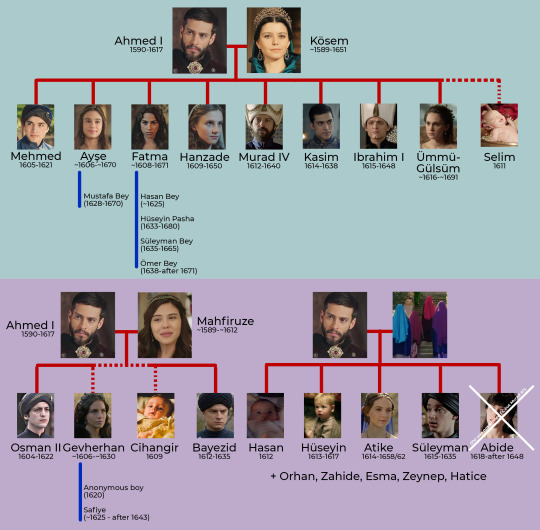
#ahmed i#history#ottoman history#ottoman empire#sultanate of women#mahpeyker kösem#kösem#mahfiruze hatun#haseki kösem sultan#ayse sultan#fatma sultan#hanzade sultan#atike sultan#abide sultan#ümmügülsüm sultan#gevherhan sultan#sehzade mehmed#sehzade kasim#sehzade bayezid#sehzade süleyman
26 notes
·
View notes
Text





This turquoise dress was first worn by Hatice Sultan in the third episode of the first season of Magnificent Century, It was worn again by Hatice's daughter Huricihan Sultan in promotional material as well as in the fourth episode of the fourth season.
The dress can also be seen on an unnamed harem member in the fourth episode and Mahfiruze Hatun in the fifth episode in the first season of Magnificent Century: Kösem.
The dress also appears on an unnamed harem member in the fourth episode of the first season of Golden Apple: The Grand Conquest.
#Muhteşem Yüzyıl#Muhteşem Yüzyıl: Kösem#Magnificent Century#Magnificent Century Kösem#Magnificent Century Kosem#Kızılelma: Bir Fetih Öyküsü#Golden Apple: The Grand Conquest#period drama#costume drama#historical drama#Hatice Sultan#Hatice Sultan (Daughter of Hafsa)#Huricihan Sultan#Mahfiruze Hatun#Mahfiruze Sultan#Rasha Hatun#Unnamed Harem Members#reused costumes#recycled costumes
14 notes
·
View notes
Text




#history#magnificent century#muhteşem yüzyıl#ottoman#sultanas#ottoman sultanas#ottoman history#ottoman valide#mahfiruze hatun#mahfiruz hatun#mahfiruze#It's not my favorite but I love it
9 notes
·
View notes
Note
Hello! I’m so happy to see you’re back.
I believe Gevherhan was Ahmed's first daughter for several reasons:
Considering how fond Ahmed was of his great-aunt Gevherhan, it's likely that he named his first daughter after her. This makes it plausible that Gevherhan was the eldest daughter, born in March 1605, or even before Osman. If this is the case, she would have been old enough to give birth to her first child by 1620. While we could push her birthdate a little later, there is no evidence of any other baby born in 1605 besides those in March.
If Gevherhan was indeed the daughter born in 1605 or before Osman (based on her wedding date and the birth of her first child, she must have been), this would mean that neither Kösem nor Mahfiruz could be her mother.
It's also possible that Gevherhan was born around this time, but her mother may have died during childbirth or shortly after. In this scenario, she might have been given to Mahfiruz, as the first consort, to raise, which could explain why people assumed she was Osman's full sister, since they appeared to share the same mother. Of course, it's possible that Gevherhan was born in 1605, but not in March, and the daughter born in March was one of the daughters who died young. If that’s the case, then Gevherhan could indeed be Mahfiruz’s daughter.
Lastly, if Mahfiruz was Gevherhan's mother, it's intriguing that Ahmed made Kösem the Haseki Sultan so early, despite already having two children with Mahfiruz.
Also, are you planning to continue with the “(OTTOMAN) WOMEN’S HISTORY MEME”? I’ve really missed your gifts—they’re so beautiful.
Hi, thank you very much! Since I'm currently working on this, my interest has rekindled.
I completely agree with you and to tell you the truth, I also thought that maybe she could have been given to Mahfiruz to be raised (especially if, at the time, she was the only mother in the harem).
Mmh unfortunately I don't find making gifs fun anymore and I also deleted everything related to it... I think I may still have a gifset in my drafts, though, if you would like to see it.
5 notes
·
View notes
Text
Consorts named "Hatice" Part 1






#youtube#history#ottoman empire#istanbul#hatun#hasekisultan#fyp#hatice sultan#mahfiruze#turhan sultan#sultanahmet#sultanmurad#sultanmehmed#fatihsultanmehmed#sultan#muazzezsultan
5 notes
·
View notes
Text






𝑂𝑡𝑡𝑜𝑚𝑎𝑛 𝐷𝑦𝑛𝑎𝑠𝑡𝑦 𝐻𝑖𝑠𝑡𝑜𝑟𝑦 𝐴𝑝𝑝𝑟𝑒𝑐𝑖𝑎𝑡𝑖𝑜𝑛 𝑀𝑜𝑛𝑡ℎ:
𝑊𝑒𝑒𝑘 3: 𝑂𝑡𝑡𝑜𝑚𝑎𝑛 𝐷𝑦𝑛𝑎𝑠𝑡𝑦 𝐶𝑜𝑛𝑠𝑜𝑟𝑡𝑠
𝐷𝑎𝑦 15: 𝑀𝑎ℎ𝑓𝑖𝑟𝑢𝑧 𝐻𝑎𝑡𝑢𝑛, 𝐻𝑎𝑡𝑖𝑐𝑒 𝑀𝑎ℎ𝑓𝑖𝑟𝑢𝑧 𝐻𝑎𝑡𝑢𝑛
#mahfiruz hatun#mahfiruz hatice hatun#muhtesem yuzil kosem#magnificent century: kosem#ottoman dynasty history appreciation month:week 3
16 notes
·
View notes
Text
Mistakes in the Magnificent Century part III
(title, ranks and traditions)
Some facts might be the same or very similar to the ones in previous parts,but they will be discussed from different angle.
1. Valide Sultan title

As I have spoken in the previous chapters, pre 1520 mothers of sultans were not sultans at all, they were titles as hatuns, though treated with utmost respect. In 1520 as Suleiman the Magnificent ascended the throne, he bestowed the title of Sultan to her mother Ayşe Hafsa, thus making her the first person in the ottoman history to become sultan from slavery. However, for Ayşe Hafsa being Sultan was not the same as the Valide Sultan that we know today. She was sultan yes, and she was the mother, so "Valide" was the proper address,from her children, as it was for every mother in the Ottoman empire, she was registered as "the mother of Sultan Suleiman", therefore in some sense, we can say she was not "Valide Sultan".
The first person,who actually made the "Valide sultan" a thing and officially registered herself was Nurbanu. So, the first Valide sultan with its full meaning was not Hafsa,but Nurbanu, who was registered as Valide Afife Nurbanu Sultan.
2. Haseki Sultan and Hürrem's marriage.
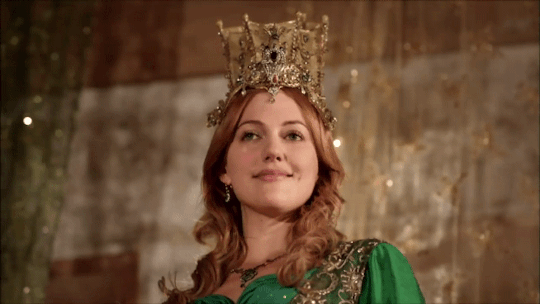
There were more than just several miscon- ceptions about the subject in the show.
First and foremost it was created specifically for Hürrem,so neither Hafsa nor Mahidevran have ever had the title. It also brought another mistake about Hafsa,that I will explain below,but now I will just make clearer how, when and why the status was created.
It was almost definitely created in mid-1534 after the death of Ayşe Hafsa Sultan and was probably legalised by their marriage, which by some sources is mentioned to be in 1533. If this is right, then it would mean, Suleiman married Hürrem before he gave her the status of Haseki and the marriage only freed her,but the most common and for me the most logical version is that after the death of Hafsa Sultan, Suleiman married her and gave her the title.
The death of Hafsa Sultan is a crucial part in the story, nor because she had some kind of objection towards Hürrem or her promotion,but the legal status of Hürrem reached its peak of necessity after her death. As we know, Ayşe Hafsa was a trusted ally and Confidant of uprising Sultan, even during his time as shehzade, so during the campaigns, his mother was the supervisor of the capital and his family, so the sultan could go to war without worrying about what he was leaving behind. However, after Hafsa's death things changed, Süleiman lost beloved mother and most trustworthy person around him, he needed to act immediately,as the campaign was near. He needed someone,whom he could entrust Harem, Family and the capital. His children were little, Sisters(whom by the way he trusted very much) were all married and Hürrem did not have a proper rank. It is said that he also discussed the candidate of high ranking harem servants, one and most promoted one of whom, in my opinion, would have been Gulfem, but he finally found the best possible solution that would affect his empire for centuries. He married Hürrem, gave her the rank of Haseki Sultan and left her in charge of the Harem, Family and the empire.
Hürrem became the first Haseki sultan in history.
Misusage of the title did not and here and there, not only the status and function,but even relevance of achievement was changed here. In the very first episode, Nigar kalfa made it clear that giving birth to a son, was enough to achieve it however, originally only the chosen ones could become Hasekis until its relevance faded during Murad's reign and completely lost exclusivity during Ibrahim's.
Essentially, the original function of haseki sultan was filling the absence of Valide, therefore only Hürrem and Nurbanu can be considered as the "original Haseki Sultans". Later many women were given the status, however the show made it wrong. Mahidevran,Mahfiruz and Halime never held it, however Şevikar, referred as Şevikar hatun in the show, was actually Haseki Şevikar sultan, the fifth Haseki of Ibrahim, three of whom, Ayşe, Mahinerv and Saçbağli, were left out, which is kind of understandable, because they had no importance in plot, unlike Turhan, never became Valide,unlike Saliha Dilaşub and Muazzez and had no influence on Ibrahim,Unlike Şevikar and Humaşah.
Their social standing is also misportrayed in the show, where Haseki ranks below and bows to imperial princesses, while in real life it was the other way around.
3. Daughters of Ottoman Princesses

In the show, we met three daughters of the ottoman princesses: Esmahan,Huriçihan and Humaşah. They are referred to as Sultans,but in real life the daughters of imperial princesses were not called so,instead they had the title Hanimsultan and ranked even below the imperial consorts. The only exception to that was Humaşah, the daughter of Mihrimah Sultan, who received the title and prestige of the Sultan.
4. Harem Kalfa

In the show, they are just giving people the rank left and right. Nigar was already a high ranking, trusted servant of harem,but it turned out that she had only been there for 6 years. Fidan hatun was banished for attacking Sultan,but after a while she returned and became Kalfa, in Kösem melek hatun received rank out of the blue etc.
In real life, however, becoming kalfa was a long process. As we know,there were hundreds or even thousands of girls in the harem,but only a handful of them would become favourites,but what would happen to others? After ten years of being a harem resident some of them would have been transferred from harem and soon married off, some could by freedom, while others, usually the smartest and most responsible ones,would go to a special school that lasted two years, they would revive extensive training, both intellectual and physical, after that they could return in harem as teachers and overseers and if they were good enough they could promote.
There was actually quite a complicated hierarchy of harem servants,not only there were Kalfa's who had duty to supervise certain works like food or laundry(later even coffee),but there were administrative ranks, that they could achieve:
Mistress chief treasurer(Baş Hazinedar usta): she was head of the harem treasury.
Treasurers(Hazinedars): there were other hazinedars as well, who worked in harem treasury. Baş hazinedar usta was their direct superior.
Imperial Kalfa(Hünkar Kalfası): Personal kalfa of the padişah.
Lady stewardess(Kahya kadin/Kethüda Hatun): she ranked below imperial consorts,but her role raised during sultanate of women, when Gülfem and Çanfeda held the office, they were right hand women of Chief Harem managers(Hürrem and Nurbanu) therefore second in command of the Harem.
Senior Kalfa(Büyük Kalfa): Head of Kalfas, she was responsible for literally everything that was happening in the harem, sultans and şehzades treated her with respect and called "my kalfa" or "your grace"
Lady secretary: secretary of administrative organs of harem.
Junior kalfa( Küçük Kalfa): Senior kalfa was their direct superior. They had ranks within( second- ranking, third ranking, novice etc.) They were sometimes teachers and daily overseers.
Çanfeda for example entered the harem with Nurbanu, so in late 1530's or early 1540's. Nurbanu became favourite and went to Manisa, while Çanfeda remained in the old palace, in 1566 she was already a high ranking kalfa in the old palace, when Nurbanu called her. That would mean she was sent to train as kalfa in late 1540's or yearly 1550's, therefore she would have a decade or two to raise in ranks.
5. Princely harem.

In the magnificent century, prince usually gets his harem, whole in Topkapi palace, which is the lie through and through. They went even further and made up with the rule that the prince can not have a child with their concubine until they get their province to rule. Why would they be allowed to have concubines,but not having a child, when contraception is still unreliable.
Actually, their case was far more easier, princes would revive their sanjaks while still very young, their mothers, governesses and close servants would carefully choose their harem and leave the palace with their mother and full sisters. That also brought another mistake in the show. In the flashbacks, we can see Ayşe Hafsa and Hatice visiting Suleiman in Manisa, however Ayşe Hafsa along with Fatma and beyhan left for Manisa with Suleiman in 1512, while Hatice,being 4 years older than Suleiman, got married the same year.
6. Regency
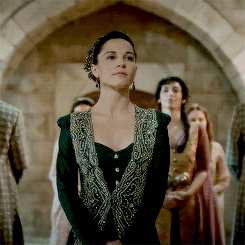
They introduced Kösem's regency as something unheard of,while completely neglecting Handan and Halime.
Handan was the first woman ever to rule as regents in her son's stead. She appointed viziers, discussed political matters and built a trusted circle for her son.
Halime was not officially registered regent but due to the insanity of her son, paşas asked her to rule the state after the rebellion she herself organized.
Kösem's and Turhan's regency is well known, so I will not speak about it.
7. Kösem's wedding

Not exactly the mistake as it is not proven, but as the event is highly unlike, I'll just put it there.
In 1609 it is said that Ahmed had four children with two women,but neither of them were married to him. In the two latters, one form 1612 and other from 1616, the 1612 letter straight out mentions her as sultan's concubine, who he loves the most and in 1616 she is mentioned as juts Haseki,but nothing is said about the marriage( I am not adamant about him not marrying her,I am just saying that it's unlikely, however I admitt she might indeed was concubine in 1612 and after the death of Mahfiruz, Ahmed married her and raised her stipend),however early in Kösem's regency vencians questioned ottoman practice, that mother of sultan was honoured and even given the regency,despite not being married to his father. As we know in Venice and generaly in Europe, source of power for woman was her marriage and not just motherhood. That is a time, when it was "unrevealed" that ahemd married her before he died,(if that latter is to be believed than Kösem and Ahmed did not marry in 1613), now it was actually thought that it was false information used by Kösem to strengthen her position in the eye of Venice as they needed friendly relation with them. That is not widely accepted,but it can be strengthened by the fact that Vencians still did not believe it, so perhaps they knew for sure that it was lie?
8. The death of Halime sultan and Mustafa.

In the show Halime, like many others, is victim of making Kösem seem more powerful, while Mustafa was killed by Murad. In real life, Mustafa died of natural causes, probably because of epilepsy in 1539, he was buried in Hagia Sophia and the coffin was placed in a mosque built for him. Halime is buried next to him and no permission of reburial was asked or granted, therefore Halime was not killed by Kösem, she went to the old palace and lived a long life.
9. 1517-1540
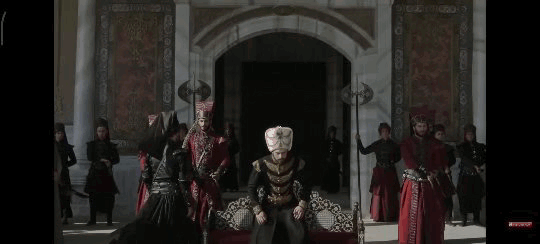
I'll be honest, I don't remember much of those episodes, they were boring and monotonous for me, but what I remember is one part from Kösem's iconic " The state you are talking about is mine" speech. She mentioned that she took over the reins of the state from Ahmed 15 years before the event, well that is a huge lie. Though the show runners tried to make Kösem all powerful, the invincible mastermind behind every single breath people drew in the empire,but she was actually quite powerless from time to time and the period between 1617 and 1623 is one of such. She was still young and inexperienced that time and main powerhouses in the empire were Halime and Osman's faction and she was not the leading force during any of the rebellions, she was allie of Halime, who, according to many historians, had major influence that time and the great impact on Kösem. Some even go as far as claiming that she persuaded Osman to kill Mehmed, so Kösem would take her side.
In short, Kösem did not have reins of sultanate for 15 years,but only about 10.
As I said, I don't remember much about the episodes, but from what I remember, Kösem had something to do with Murad's death. I'll be short on this: that's a lie.
10. Coup of 1648

The show made Kösem something of a filicidal tyrant. However, In real life her tyrannical tendencies appeared only after the death of Ibrahim, which he had nothing to do with. The ones behind the incident were Turhan and her faction. Kösem indeed took part in the Ibrahim's dethronement for the good of everyone,but mainly because she had seen the mad sultan dethroned,but lived. Mustafa had a similar situation,he was dethroned and locked in kafe, while his mother was sent to the old palace, which Kösem was absolutely willing to do. However, Turhan made her move and had Ibrahim executed to get rid of opposition for good, or perhaps because of the old resentment. Things did not go exactly as she had planned though, Kösem became regent and visibly started to avenge Ibrahim's death, it became clear that she was not going to hand over any power to Turhan and after she started to oppose even went as far as attempted dethronement of Mehmed(however she was not going to kill him.)
Therefore the child killing monster the show made her become is straight out a lie. One of her sons died of natural causes and the other was killed by outer forces, that she tried to avenge.
#history#historical drama#16th century#magnificent century#magnificent century kosem#mc: kosem#ottoman empire#ottomanladies#historical events#historical figures#sultanate of women#haseki hurrem sultan#hurrem sultan#nurbanu sultan#kosem sultan#safiye sultan#muhtesem yuzil kosem#historyedit#historical#ottoman sultanas#ottoman history#ottoman#mistakes in the magnificent century
204 notes
·
View notes
Text


I'm confused but I hope you can help me out. Are Cihan Hatun (Mehmed's concubine) and Sayeste Hatun (sidekick of Mahfiruz Hatun in the first few episodes of MCK) played by the same actress or did I get the name of one of the two actresses wrong?
According to Turkish wikipedia, Cihan is played by Patrycja Widłak but according to MedyaRadar (from what I can guess from context), she is also playing Sayeste but this role isn't credited on her imdb page. I'm not necessary faceblind but I'm also not good at saying whether two people look very much alike or are indeed the same person. So Magnificent Century crowd, can you help me out of my misery?
#Magnificent Century#Magnificent Century Kösem#Magnificent Century Kosem#Muhteşem Yüzyıl#Muhteşem Yüzyıl: Kösem#Cihan Hatun#Şayeste Hatun#Sayeste Hatun#Patrycja Widłak#Patrycja Widlak
20 notes
·
View notes
Text
osmanlı padişahlarının anneleri, genellikle “valide sultan” unvanı taşıyan önemli figürlerdi. hem saray içerisindeki hem de devlet yönetimindeki etkileri büyüktü. işte osmanlı padişahlarının anneleri:
erken dönem (1299–1453)
1. osman gazi: hayme ana (osmanlı'nın kurucusunun annesi).
2. orhan gazi: malhun hatun veya nilüfer hatun (bu konuda bazı tartışmalar vardır).
3. i. murad: nilüfer hatun.
4. yıldırım bayezid: gülçiçek hatun.
5. i. mehmed (çelebi): devlet hatun.
6. ii. murad: emine hatun.
7. fatih sultan mehmed: hüma hatun.
klasik dönem (1453–1603)
8. ii. bayezid: gülbahar hatun.
9. yavuz sultan selim: gülbahar hatun (amasyalı).
10. kanuni sultan süleyman: hafsa sultan.
11. ii. selim: hürrem sultan.
12. iii. murad: nurbanu sultan.
13. iii. mehmed: safiye sultan.
14. i. ahmed: handan sultan.
15. i. mustafa: halime sultan.
16. ii. osman (genç osman): mahfiruz hatun.
17. iv. murad: kösem sultan.
18. i. ibrahim: kösem sultan.
geç dönem (1603–1922)
19. iv. mehmed (avcı mehmed): turhan sultan.
20. ii. süleyman: saliha dilaşub sultan.
21. ii. ahmed: hatice muazzez sultan.
22. ii. mustafa: emetullah rabia gülnuş sultan.
23. iii. ahmed: emetullah rabia gülnuş sultan.
24. i. mahmud: saliha sultan.
25. iii. osman: şehsuvar sultan.
26. iii. mustafa: mihrişah sultan.
27. i. abdülhamid: rabia şermi sultan.
28. iii. selim: mihrişah sultan.
29. iv. mustafa: ayşe sineperver sultan.
30. ii. mahmud: nakşidil sultan.
31. abdülmecid: bezmialem sultan.
32. abdülaziz: pertevniyal sultan.
33. v. murad: şevkefza sultan.
34. ii. abdülhamid: tirimüjgan sultan.
35. mehmed reşad (v.): gülcemal kadın.
36. mehmed vahdettin (vi.): gülüstü hanım.
notlar
• osmanlı annelerinin çoğu, özellikle son dönemlerde, köken itibarıyla yabancıydı ve genellikle cariye olarak saraya girmişlerdi.
• osmanlı sarayında “valide sultan”lık, padişahın annesi için güçlü bir konum sağlardı; bu nedenle devlet yönetiminde ve saray hayatında önemli roller üstlenmişlerdir.
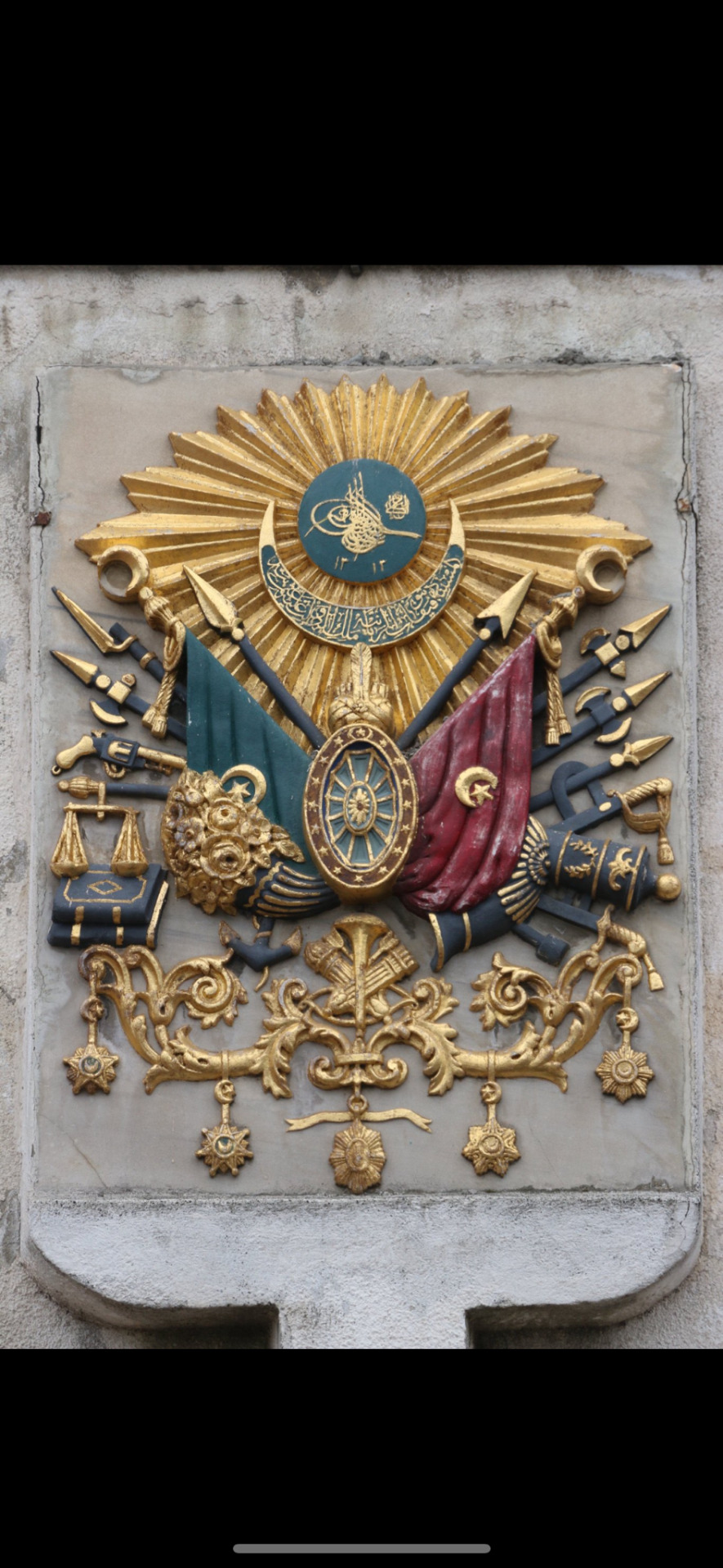
0 notes
Text



Mahfiruze Hatun foi uma das consortes de Ahmed I e a mãe de Osman II, 16° sultão do Império Otomano.
#mahfiruze#mahfiruze hatun#ottoman woman#ottoman empire#ottoman history#osman ii#ahmed i#kosem sultan
16 notes
·
View notes
Photo

Family of Ahmed I.
Some new information about Fatma: "There is no clear information in the sources about the date of Fatma Sultan's death, it is generally stated that she died after her marriage to Kozbekçi Yusuf Pasha. The cause of her death is unknown. The date on which the jewels to be sold in her estate were recorded is shown as March 1671" (...) "Considering that the inheritance was recorded after the funeral and burial procedures, it is seen that the collection of the estate took time."So she possibly died in very late 1670 or early 1671 we can be fine with that. Based on this new study she left money, inheritance to: - Haseki Sultan, who back then was Emetullah Rabia Gülnüş - Fatma Hanimsultan, who was her step-daughter and so the daughter of Esmehan Kaya Sultan --> this is interesting as Fatma Sultan and Melek Ahmed (father of Fatma Hanimsultan) were not in the best relationship... But at the same times Fatma the older cared for Fatma the younger. At this point i must mention something. We usually consider the marriage of Esmehan Kaya and Melek Ahmed a close and lovely one because of Evliya. Evliya praised the two of them, but at the same time Evliya and Melek Ahmed were relatives, sooooo maybe this whole Melek Ahmed and Esmehan thing was not so lovely? Maybe Fatma disliked Melek Ahmed with a reason? Or maybe she just blamed him for the death of Esmehan Kaya? The article mentions only two sons of Fatma: Hüseyin and Ömer. It says that Hüseyin was born from her marriage to Kaptan-ı Derya Canpoladzade Mustafa Pasha; Ömer was born from her marriage to Koca Yusuf Pasha. But we know another son of Fatma, Süleyman Bey also from Canpolzade Pasha; and one son from her very first marriage, Hasan, who died as a baby.Also it is clear that Fatma Sultan married her third husband Koca Yusuf Pasha not in 1656 but ~1637/8.
#ahmed i#mahfiruze#mahfiruz#mahfiruze hatun#mahfiruz hatun#kösem#kosem#mahpeyker#mahpeyker kosem#mahpeyker kösem#mahpeyker kösem sultan#kösem sultan#osman ii#gevherhan sultan#gevherhan#mehmed#Ayse#ayşe#ayşe sultan#ayse sultan#fatma#fatma sultan#hanzade#hanzade sultan#selim#hüseyin#süleyman#orhan#esma#sehzade mustafa
62 notes
·
View notes
Text



This kaftan was first worn by Hürrem Sultan in the twenty-second episode of the third season of Magnificent Century. Like many other of Hürrem's costumes, this one was also worn by Fatma Sultan in the fifth episode of the fourth season.
Magnificent Century: Kösem used the kaftan in the fifth episode of the first season on Mahfiruze Hatun.
#Magnificent Century#Magnificent Century Kosem#Magnificent Century Kösem#Muhteşem Yüzyıl#Muhteşem Yüzyıl: Kösem#period drama#costume drama#historical drama#Hürrem Sultan#Hurrem Sultan#Fatma Sultan#Fatma Sultan (Daughter of Hafsa)#Mahfiruze Hatun#Mahfiruze Sultan#recycled costumes#reused costumes
35 notes
·
View notes
Text
Some concubines of Sultan Ahmed I




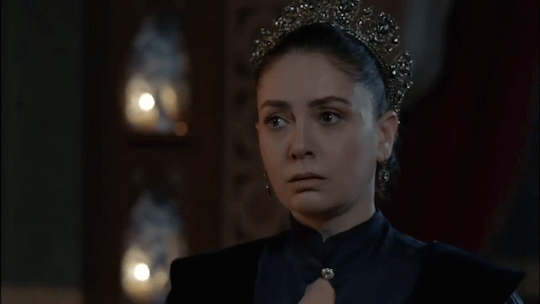
#history#magnificent century#muhteşem yüzyıl#ottoman#sultanas#ottoman sultanas#ottoman history#ottoman valide#valide sultan#mahfiruze hatun#mahfiruze#Mahfiruz hatun#Katerina hatun#valide kosem sultan#magnificent century kosem#magnificent century: kosem#kosem sultan#mc: kosem#Haseki sultan#yasemin#Hatun#gulbahar#gulbahar hatun
18 notes
·
View notes
Photo



(Almost) Every Costume Per Episode + Mahfiruze’s white gown and gold kaftan in 1x05 (requested by @callmedoctorwho)
#kosemedit#magnificent century kosem#Muhteşem Yüzyıl Kösem#Mahfiruze Hatun#Mahfiruze Sultan#Magnificent Century: Kösem#muhtesem yuzyil kosem#mck#mc: kosem#my: kosem#1x05#The Fire Flowers#weloveperioddrama#perioddramaedit#costumeedit#costumes#costume edit#costume drama#costume set#costume series#Almost Every Costume Per Episode#historical drama#period drama#perioddrama#Dilara Aksüyek#Awkward-Sultana
56 notes
·
View notes
Text
Muhtesem Yuzyil Kosem - 9 Bolum







































































































































#muhteşem yüzyıl kösem#magnificent century kösem#wspaniałe stulecie kosem#kosem#Kösem#Mahfiruze hatun#Sultan Ahmed#halime sultan#dilruba sultan#handan sultan#Derviş Pasza#zulfikar#iskender#sehzade mustafa#fahriye sultan#mehmed giray#safiye sultan#1x09#my gifs#gif by me
21 notes
·
View notes
Photo








Magnificent Century + Promo
#magnificent century#magnificent century kosem#magnificent century kösem#kösem sultan#anastasia hatun#sultan ahmed#handan sultan#safiye sultan#halime sultan#shezade mustafa#mahfiruz hatun#Magnificent Century +
222 notes
·
View notes